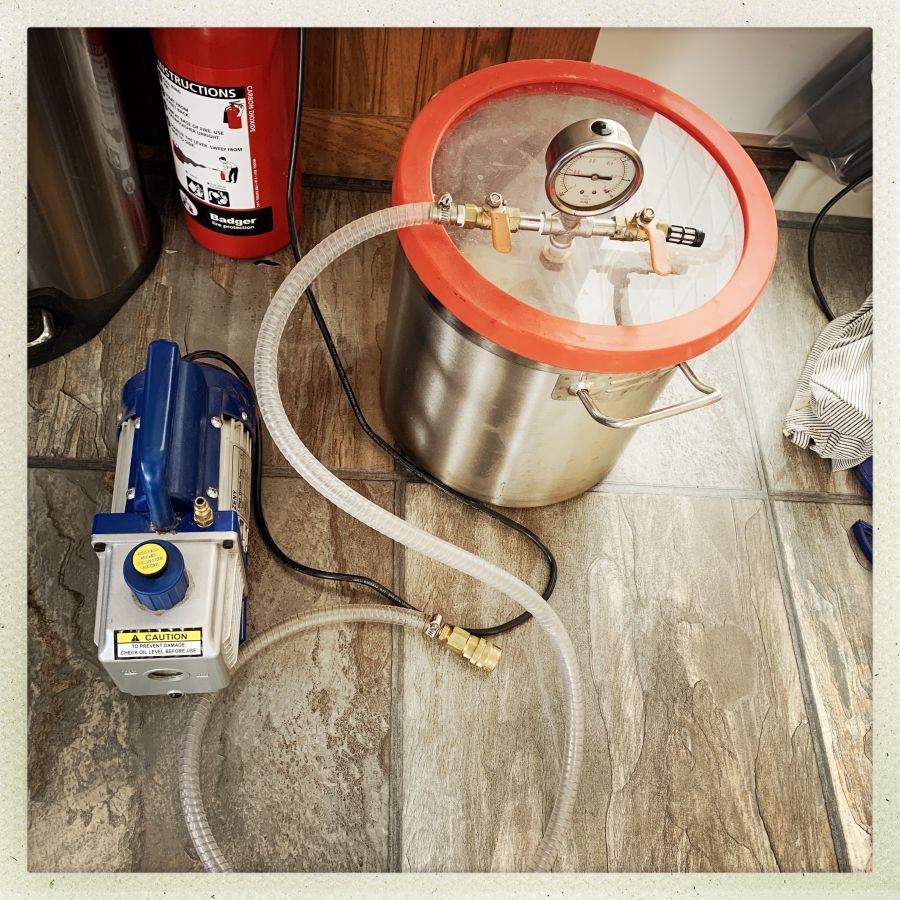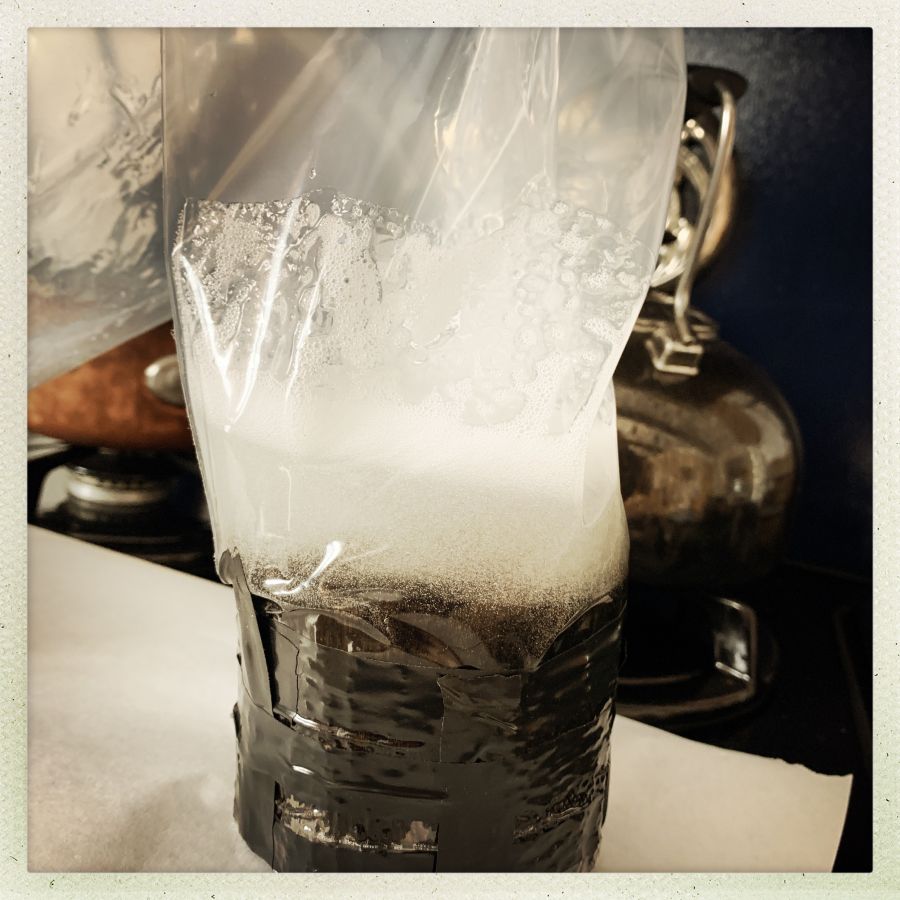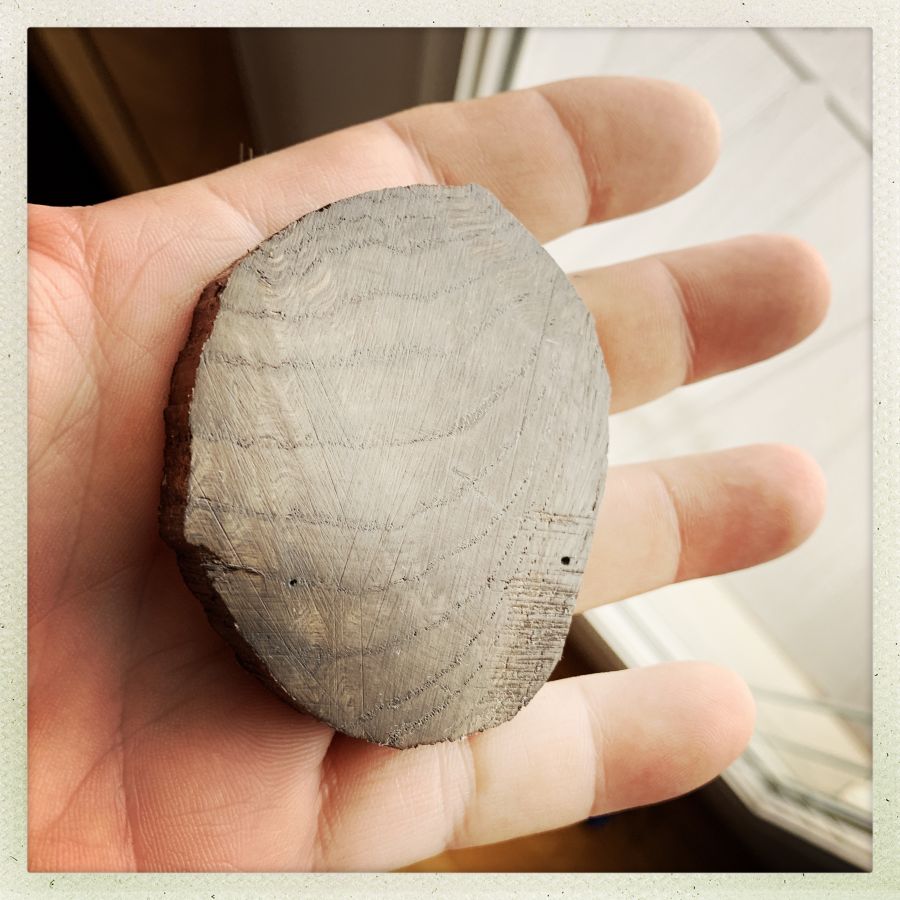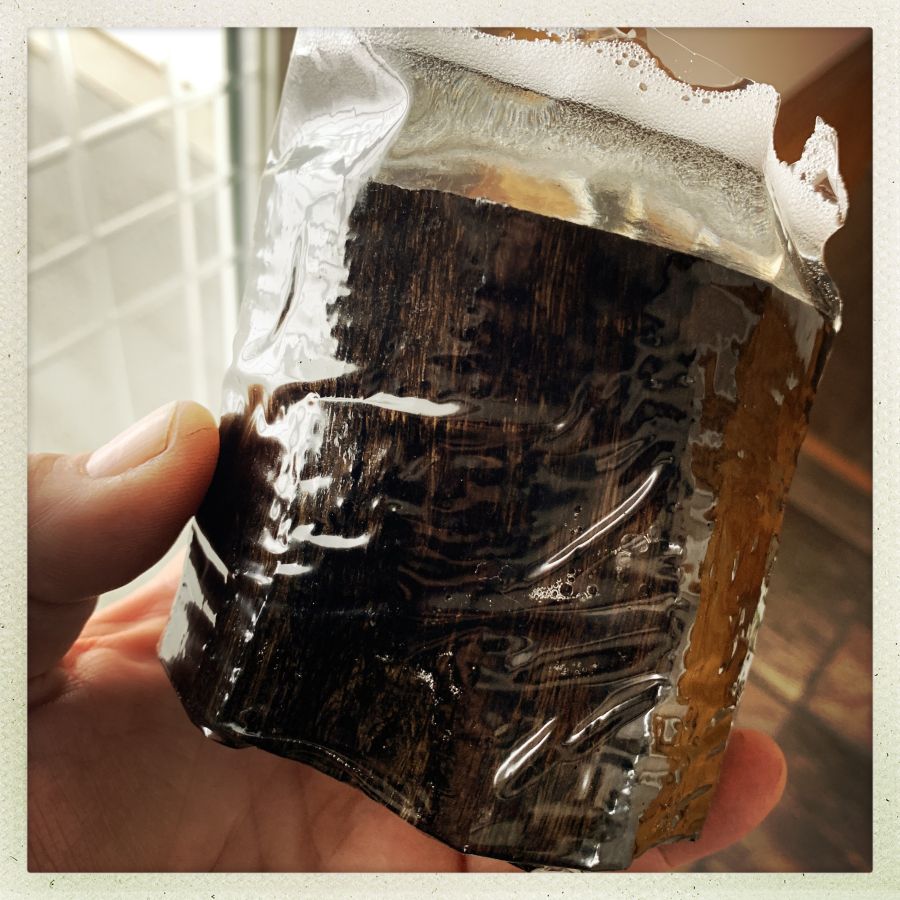Vacuum infusing resin into wood is a primary technique for stabilizing it. Usually, woodworkers use lightweight water-based resin like Cactus Juice, which is cured with heat after it’s soaked into the wood. Cactus Juice is good stuff, unquestionably. Sometimes, I want to experiment, anyway.
This is a typical “home vacuum chamber” if you’re the kind of person who has a vacuum chamber in your kitchen. Usually this thing lives in the basement and I haul it upstairs when I need its service.

There’s a guy on Ebay who used to make and sell the lids. All you need to do is find a compatible and solid stainless canning pot. The edge of the lid is milled back and a silicone gasket is put around it so that the vacuum pulls it down and makes a good seal. Once the vacuum is on, the lid will not come off. You’ve got to be a bit careful with the ball valves – make sure the exhaust is closed and the input is open. Turn on the pump and then close the input and disconnect it from the pump.
Some vacuum pumps use a mechanically moved rubber membrane, which can stretch if you leave it under pressure. That’s why (in spite of the fact that they are louder and make smoke) I use a rotary vacuum pump, which works by rotating a set of small valves through an oil bath. It’s a pretty cool design.

[source]
I don’t think that any pump should be kept running once it has raised a good vacuum, so I always turn off the inlet ball valve and drop the vacuum in the hose by unplugging the quick-release connector. Like that, the vacuum chamber will hold for at least 24hr.
With resin, that means usually the resin will be hard. The stuff I’ve been using, in my cold kitchen, takes a day to get gooey. So I leave things in the chamber for an hour or two and drop the pressure when I go to bed. Then, overnight, the resin sneaks back into all the voids in the wood. The trick is to keep the wood under the resin. Thus:

Bog oak beer, with a “head” on it
What I have there is a round of bog oak, wrapped in a heavy poly bag, then taped nice and close with electrical tape. The theory is that the resin on top keeps the oak submerged in resin. When the vacuum pulls the air out, there’s nowhere for it to go but up and foam out. Then when the vacuum drops there’s no air to suck back into the wood, just resin. Win!
Here is what it looks like, vacuuming the air out of a round of maple burl. I put the burl in a tightly fitted poly bucket then weighted it down with a spare hammer head. Vacuum the air out while it’s covered in a layer of resin, then let it soak, and drop the vacuum.
It takes a long while for the foam to go down. The vaccum really pulls a lot of tiny bubbles out of the wood. Although, then I inspected it a couple days later, the resin is clear and hard and the wood looks delicious. There are some voids I’ll probably have to do the clay cofferdam trick with.

That looks pretty neat, huh? Since the side facing the camera is going to be the “inside” of the platter, I will glue a maple block to the bottom of the other side, which is very convenient because there’s a large area of flat resin that will all get chiseled and sanded off. This side will get (with some luck) chewed out and shaped into something elegant-ish. I want to try to make some curved pieces; that’s where woodturning gets hard.

This is a test-piece of resin-soaked bog oak. To get it this way, I vacuum soaked it then left it outside on the porch so it wouldn’t harden. Once I was sure it was soaked in, I wiped it off with a towel and set it on the radiator. Look at that grain! And it’s approximately as tough as rock. Tougher, probably – it’s a fiber composite. It may be more like carbon fiber in terms of strength. I have to identify a few projects for this stuff.
I also need to make a V-sled for Mr Happy Dancing Bandsaw so I can slice straight chunks off the loglets. I am going to put a clamp system on it so I can protect myself from unauthorized log excusions.

That’s what the bog oak latte’ cured down to. It appears to be completely soaked with resin, so that’s a success. I’ve sawed some of this stuff and it’s pretty scary – if the resin gets too hot it gets sticky. Sticky + table-saw is bad. Sticky + bandsaw is bad.

Do you hold the vacuum until it is cured? Or do you relieve the vacuum after a while to let pressure push the resin back in?
“So I leave things in the chamber for an hour or two and drop the pressure when I go to bed. Then, overnight, the resin sneaks back into all the voids in the wood.” — nevermind.
I can imagine!
Funny. Last week I bought this pot. Thanks to the EFTA because the only supplier was in Belgium. Only I cannot connect it to the vacuum pump yet because the pump has 1/8 thread and this thing has 1/4 thread. And shops selling non-essential goods are closed now due to corona and ordering one tiny thing over the internet is not worth it. Luckily I won’t need it for a while now anyway.
Here’s a Bog Oak post for you!
fusilier, Neandertal wooddorker
James 2:24
https://blog.lostartpress.com/2021/02/17/adamson-low-treasure-out-of-the-bog/#comments
DAMMIT I forgot the linkie, dammit, dammit, dammit
fusilier
James 2:24